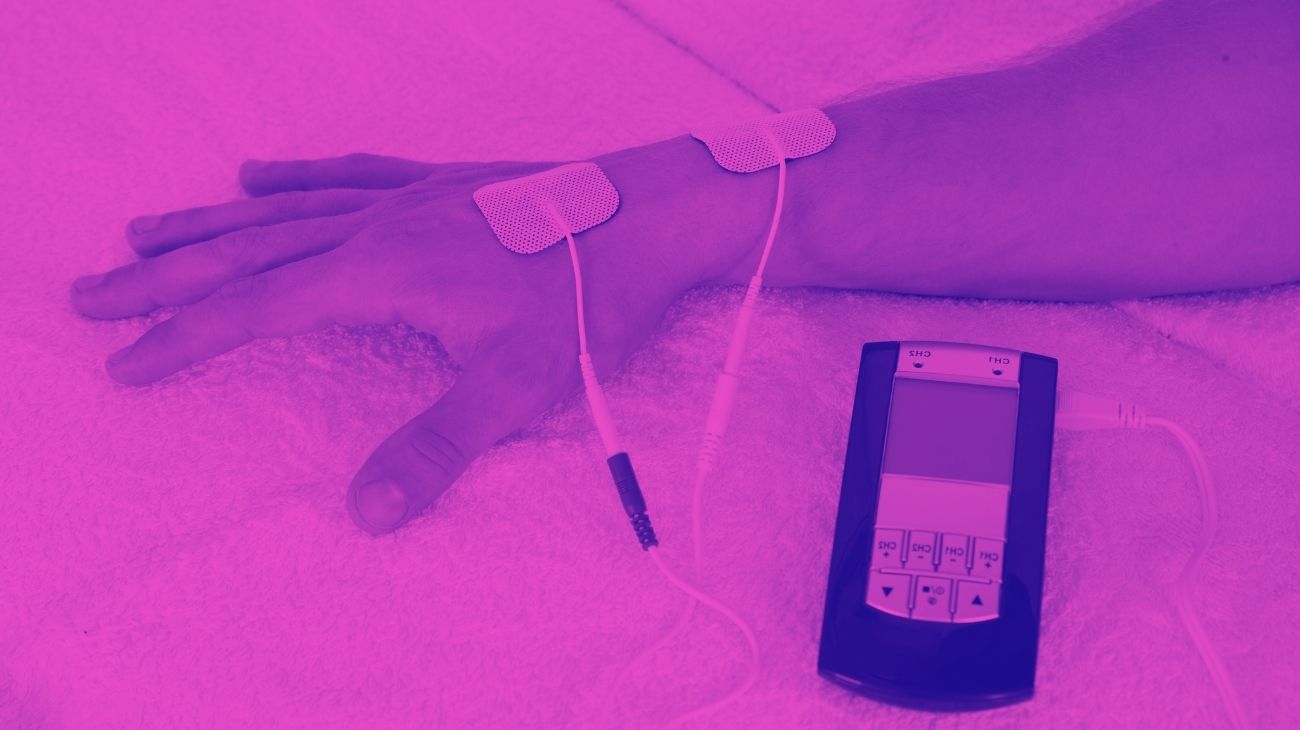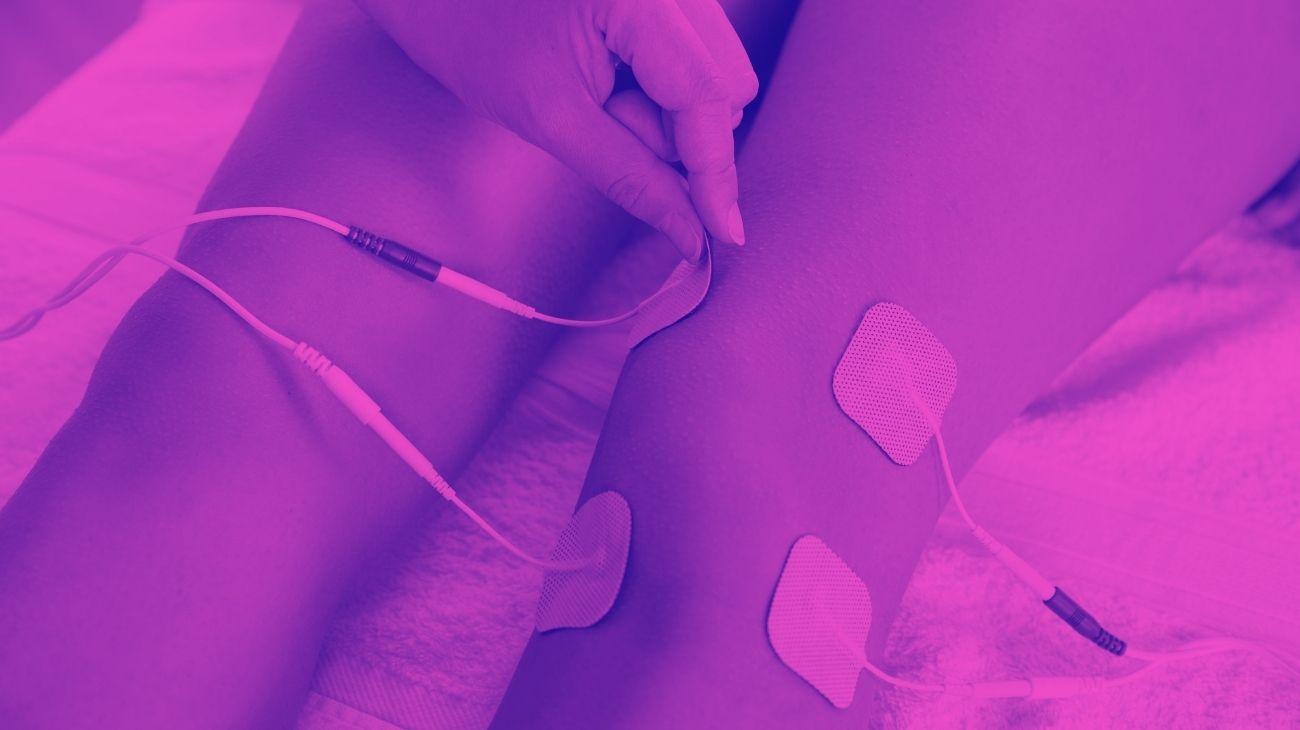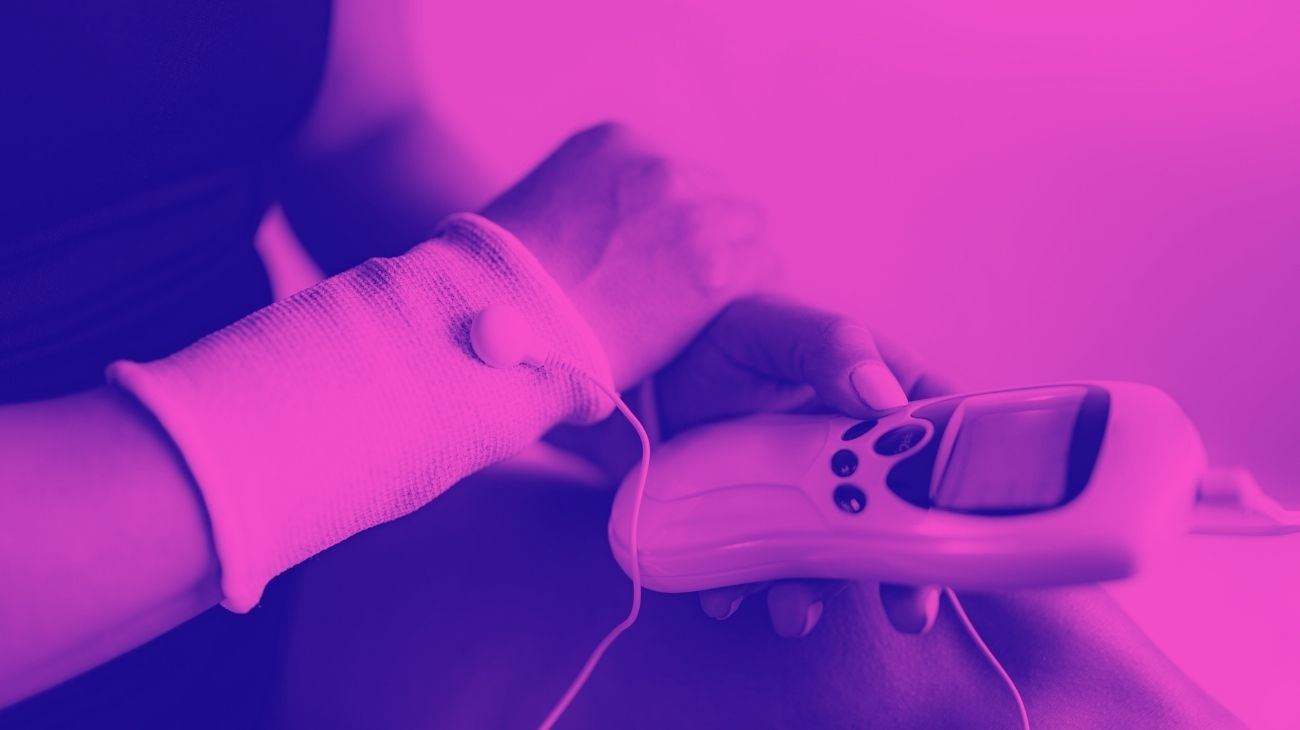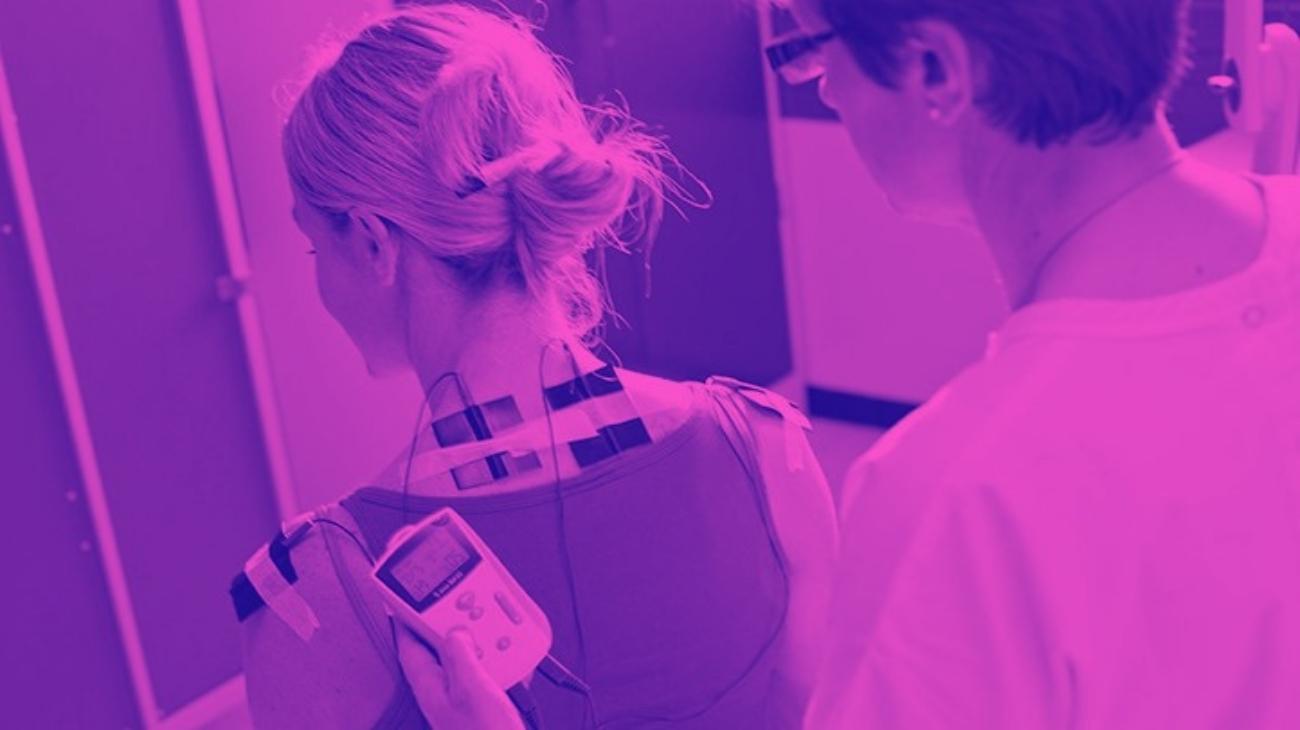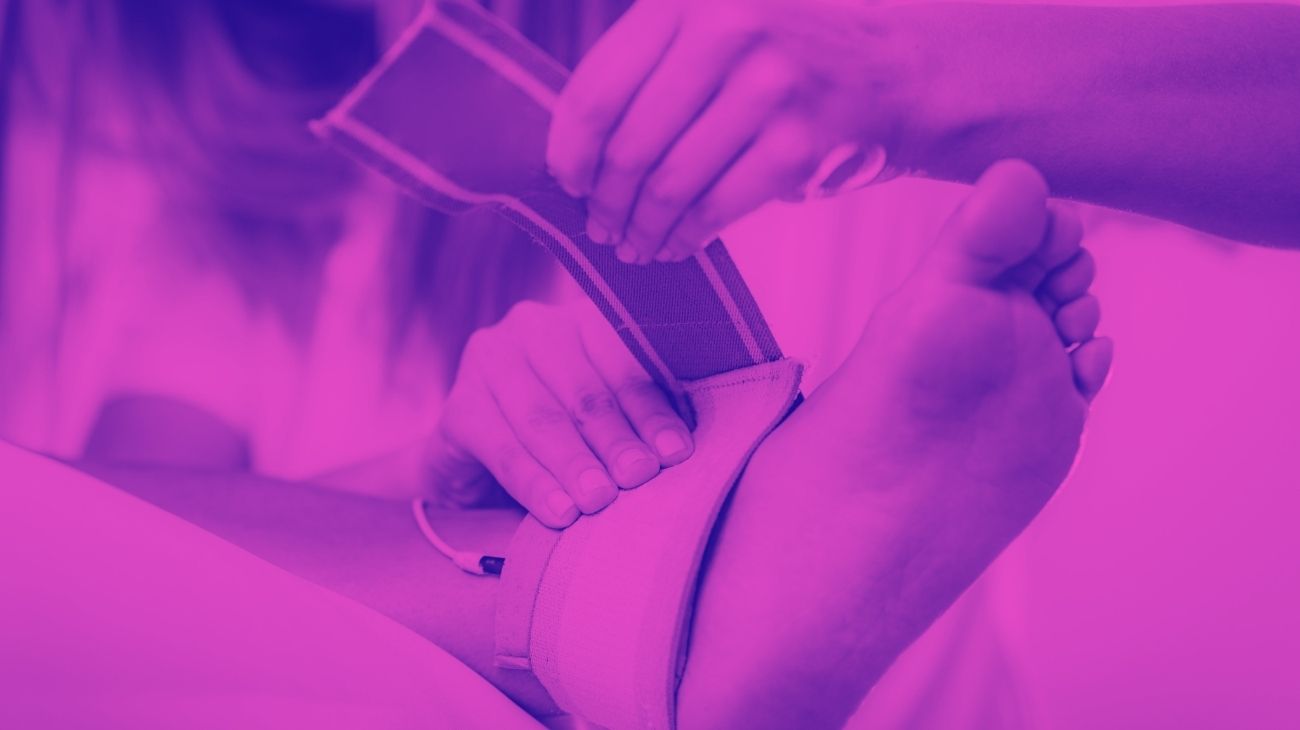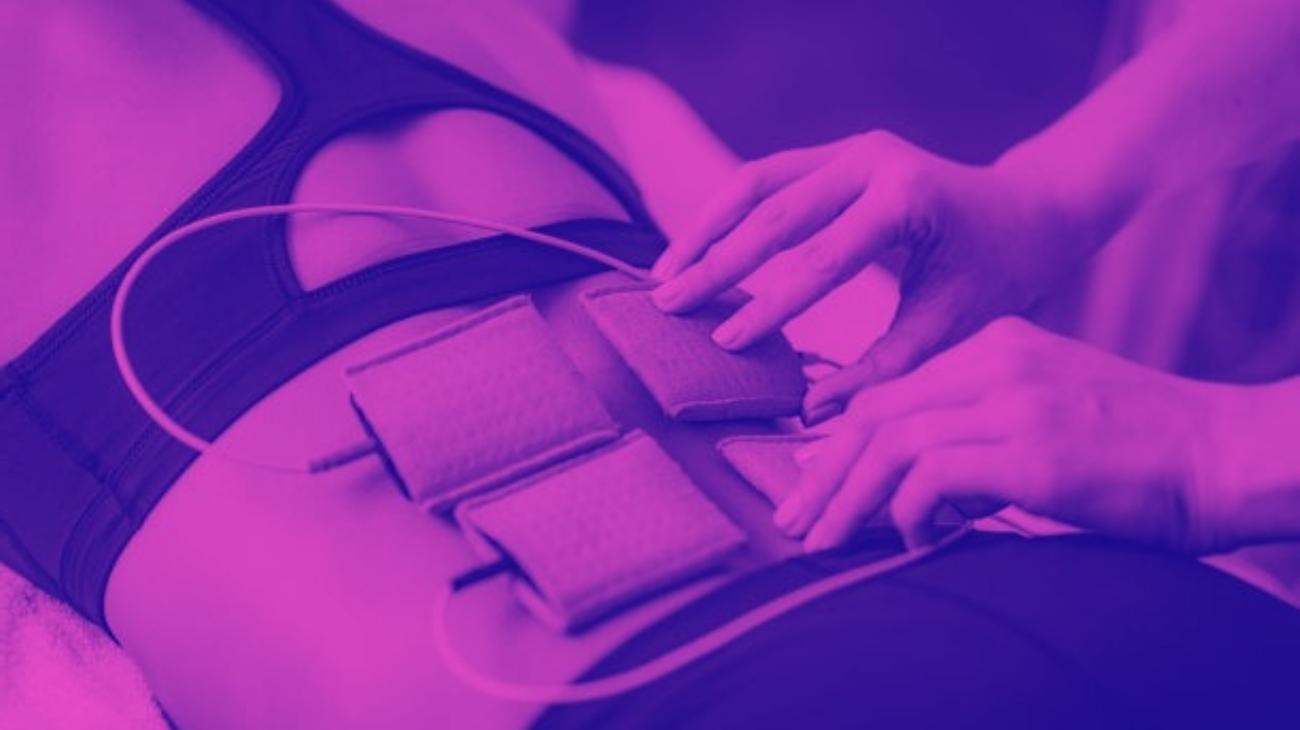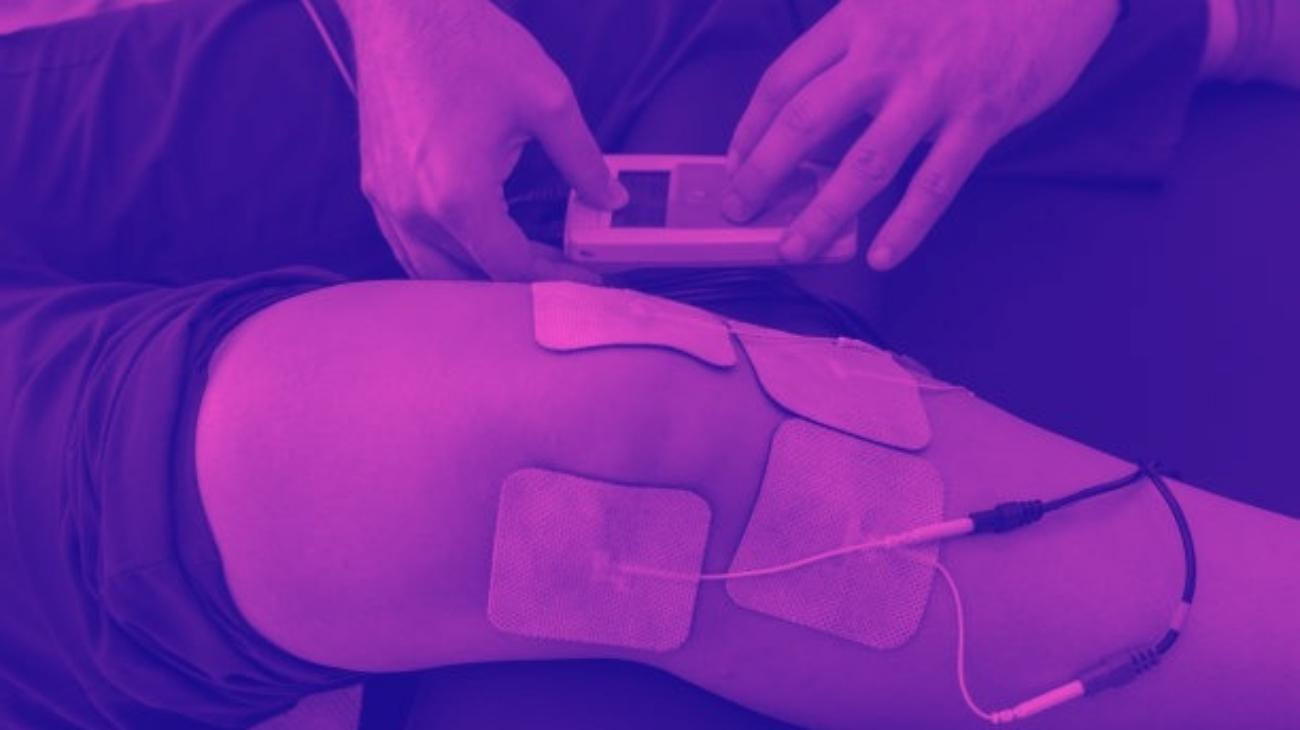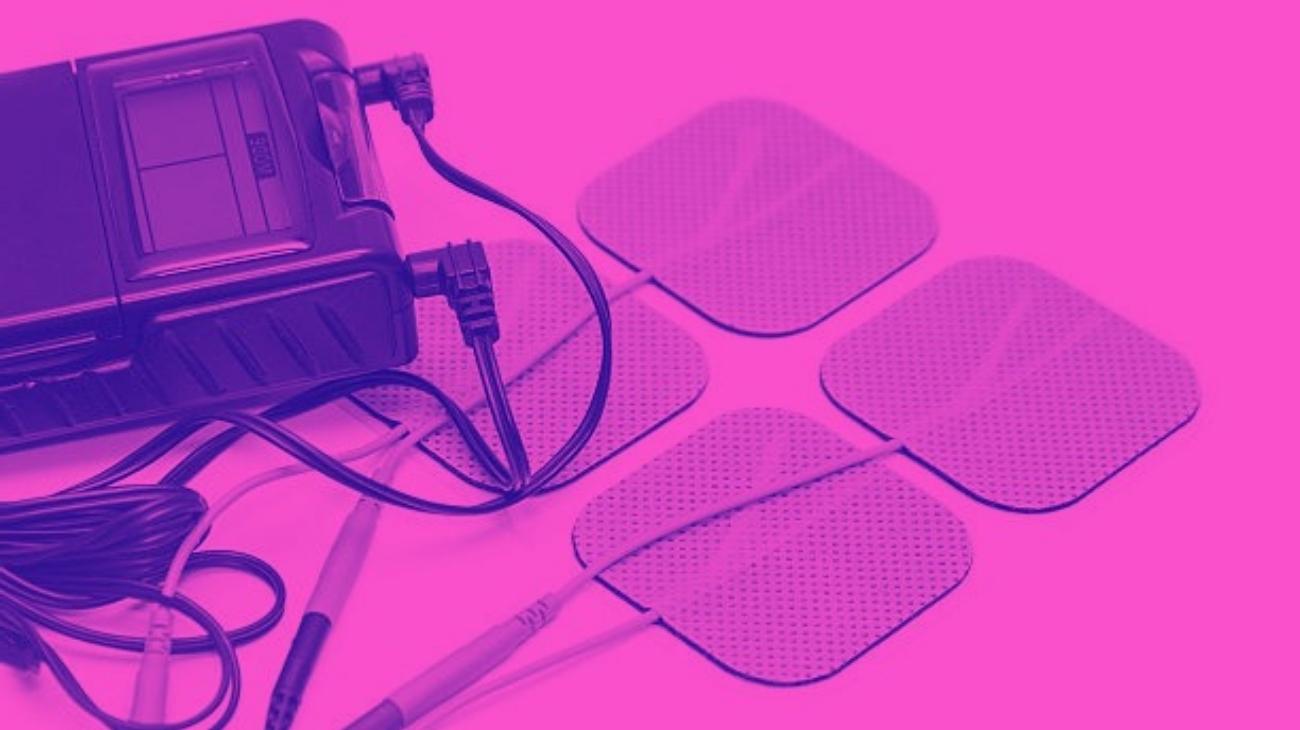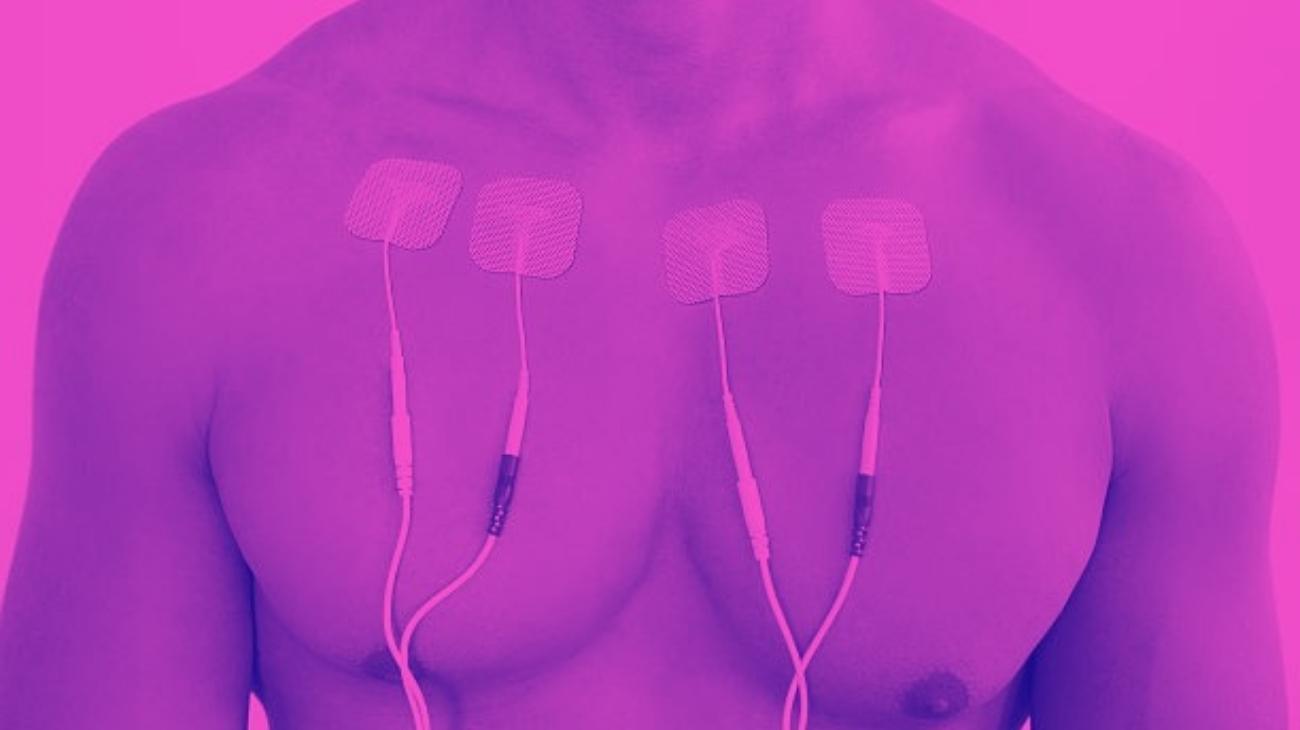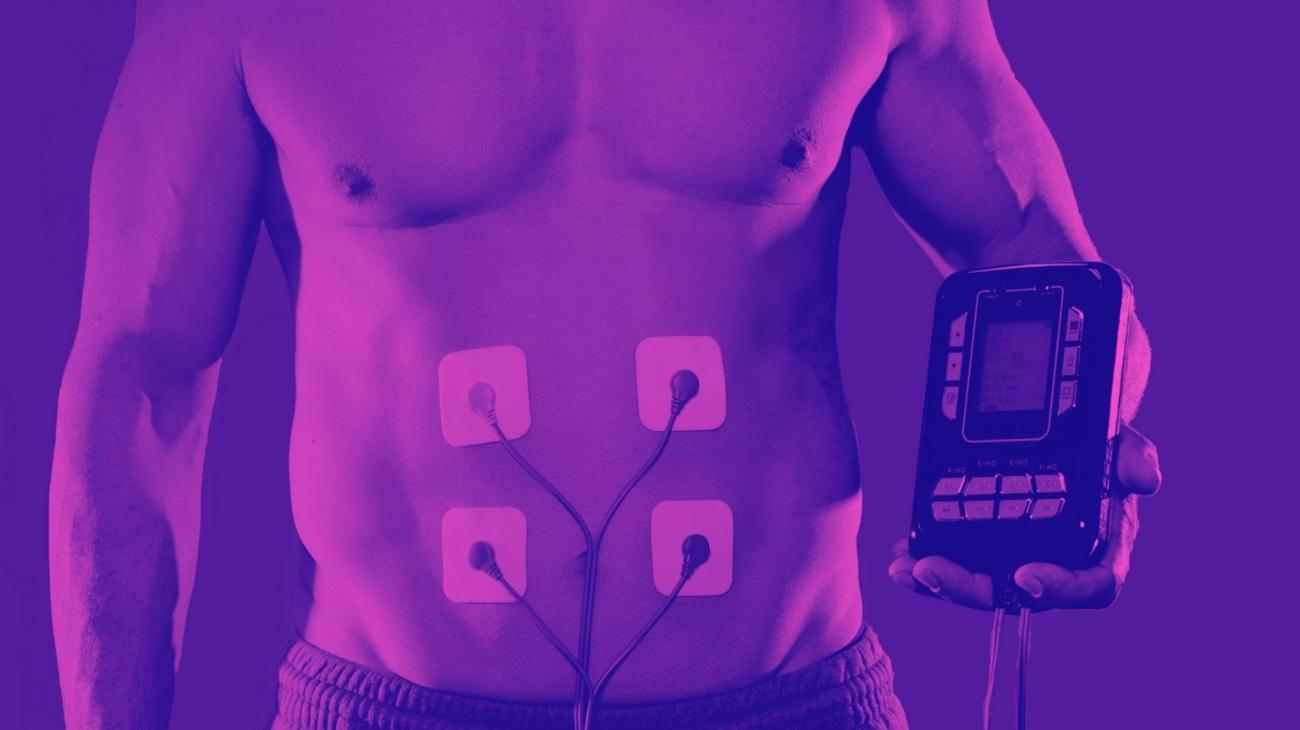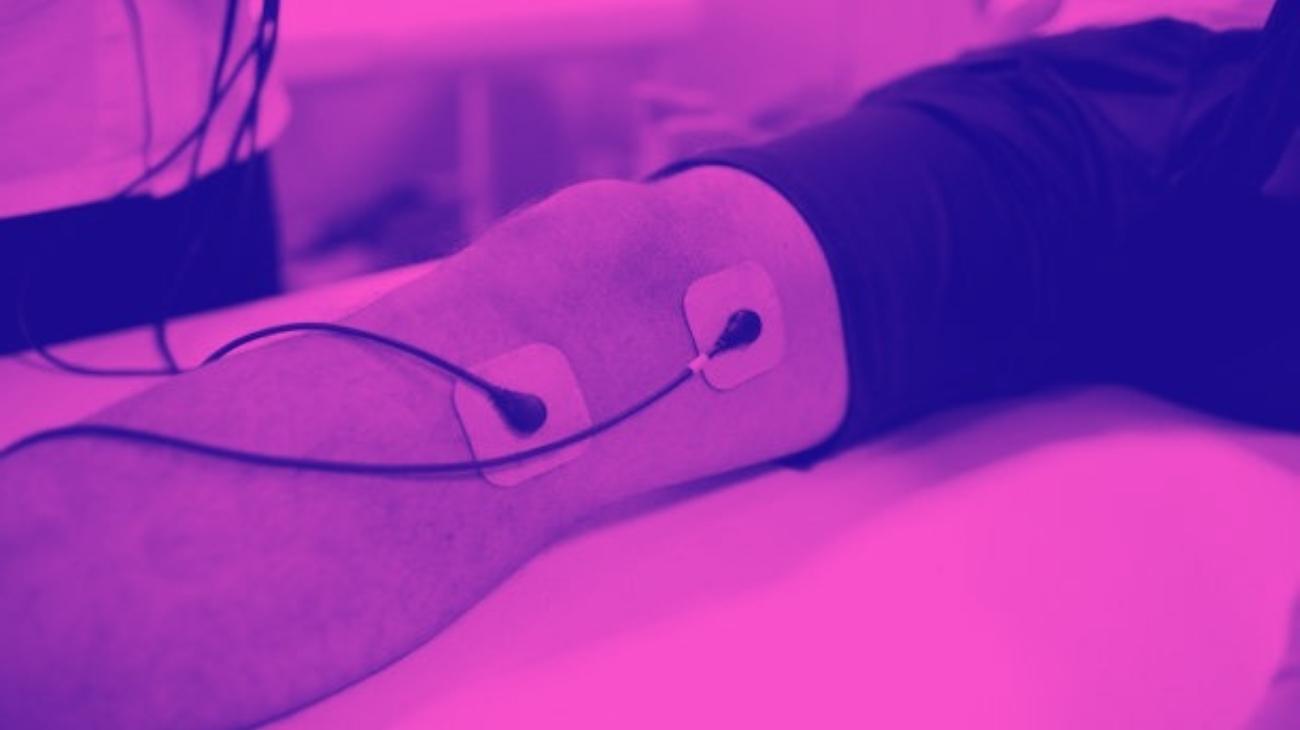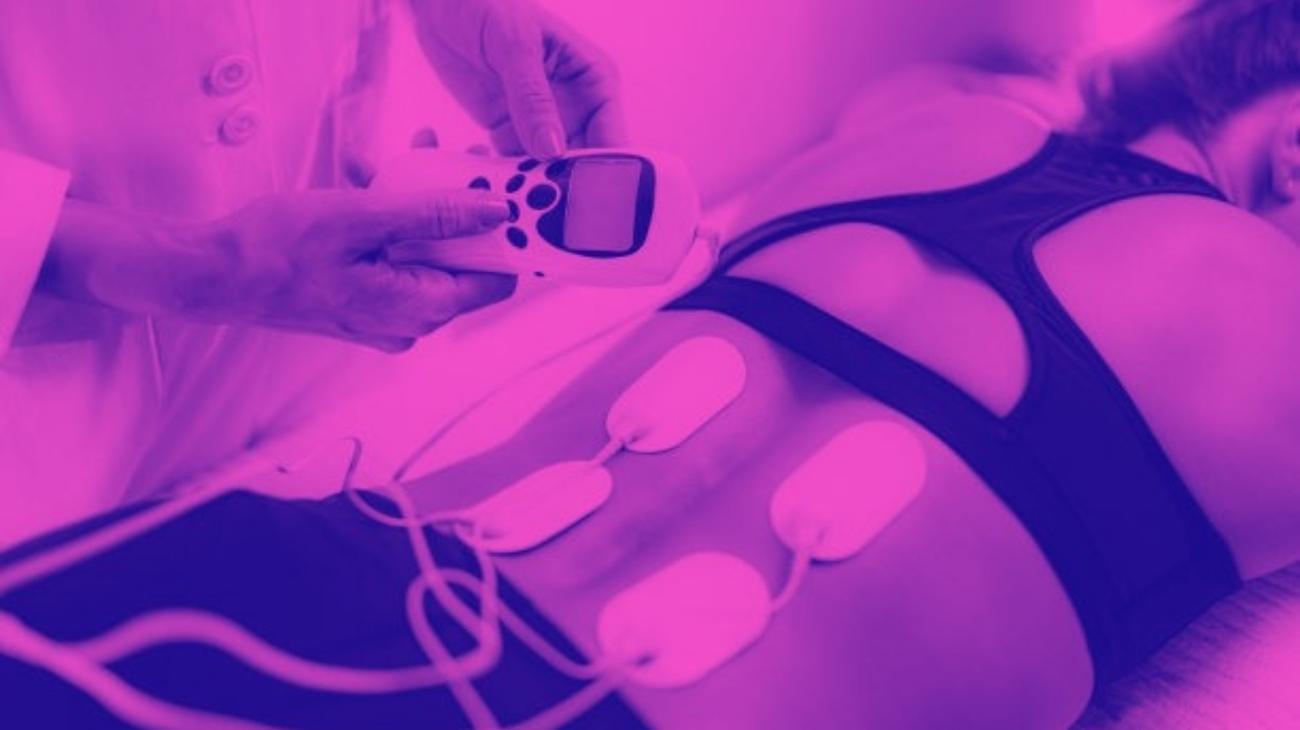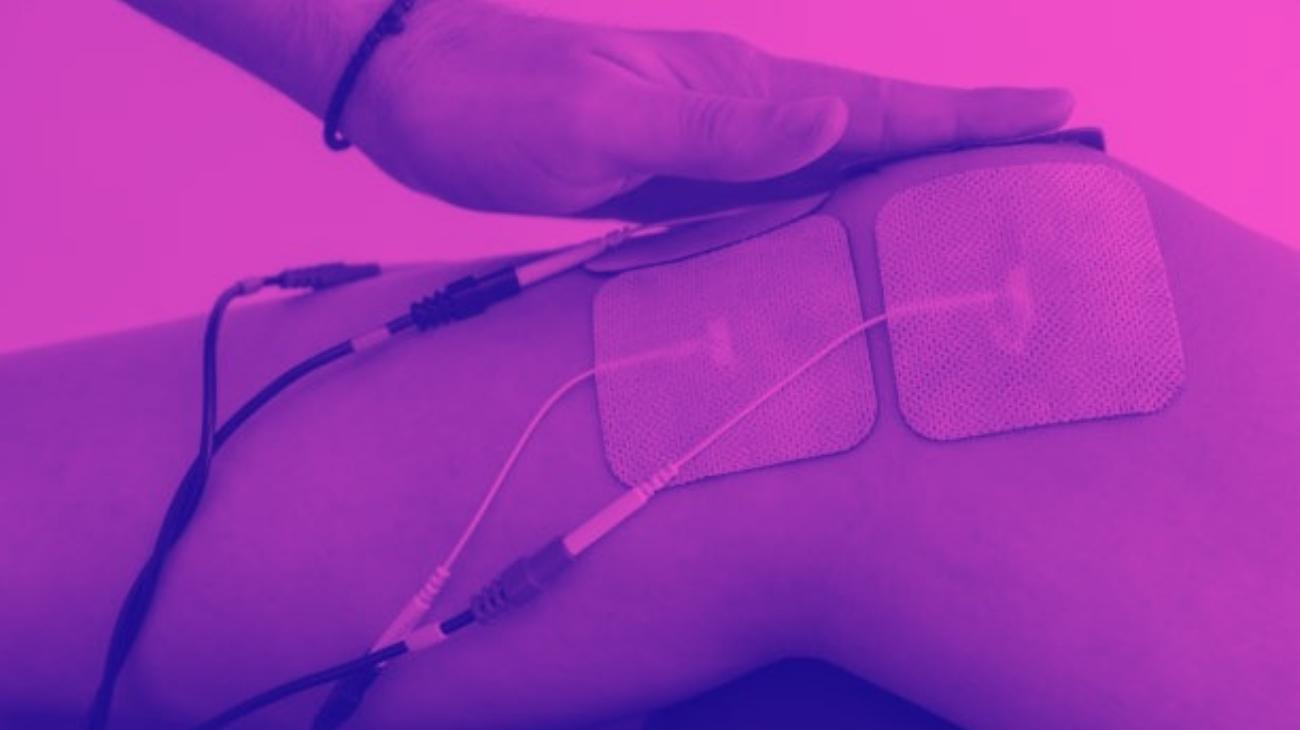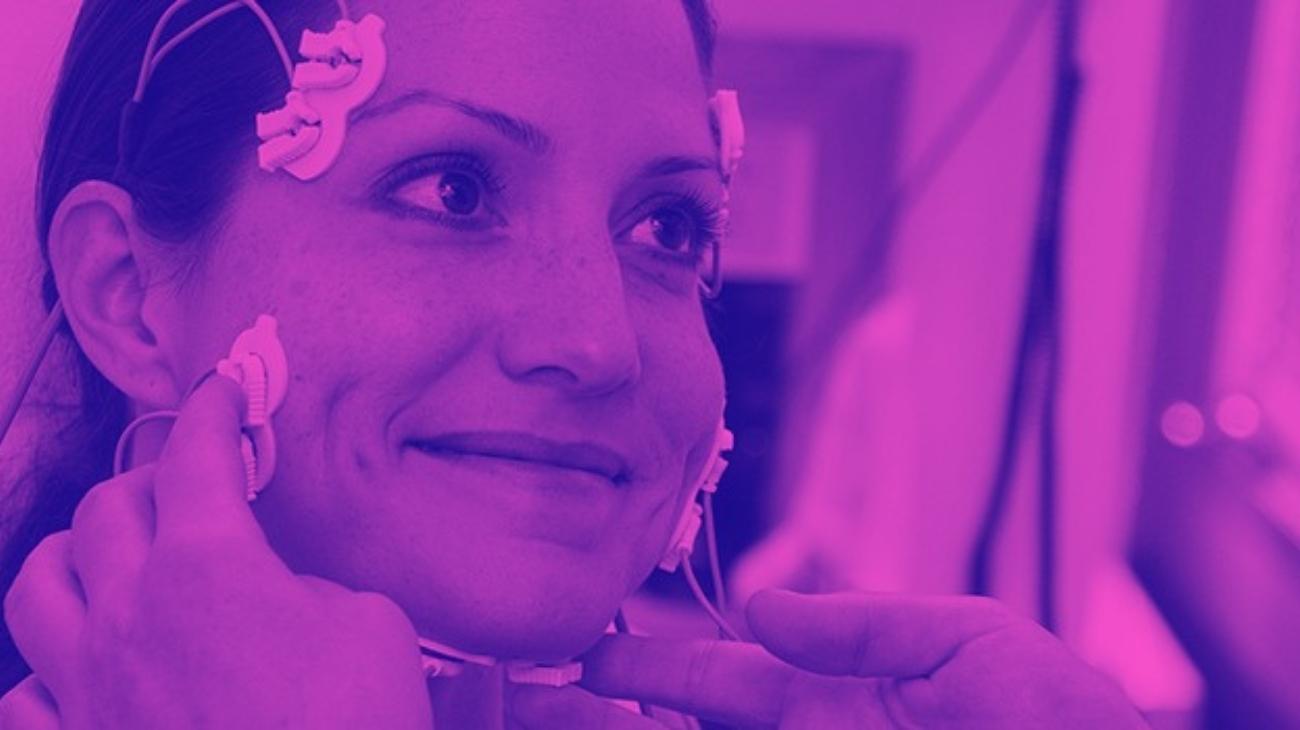- How to use TENS machines to relieve peripheral neuropathy pain?
- Best TENS units to treat nerve damage in the feet and legs
- How to use EMS to strengthen muscles and prevent peripheral neuropathy?
- Best EMS machines to prevent nerve damage in feet
- Video: How to place the electrodes pads on the foot?
- More types of EMS electrostimulators and TENS machines you should know
- What is neuropathy and what are the causes?
- What are the most common types of neuropathies?
- Differences between TENS and EMS: Which is better for treating damaged nerves in feet?
- Contraindications in the use of electrodes and electrotherapy
Hands and feet are densely innervated appendages, so they have a high sensitivity. This causes nerve damage in these areas derived from certain diseases and disorders to generate ailments that are mainly centered in the hands and feet, limiting body functions to different degrees.
This kind of disorder is known as peripheral neuropathy or peripheral polyneuropathy, which is a very limiting disorder for the performance of the human body. In this article, we will teach you everything you need to know about peripheral neuropathy, its causes and symptoms, as well as how to use TENS and EMS electrotherapy methods to treat this disorder.
How to use TENS machines to relieve peripheral neuropathy pain?
The application of TENS therapy for the treatment of neuropathy obeys certain criteria that need to be applied to ensure the effectiveness of the treatment. These are the positioning of the electrodes on the affected areas and the intensity of the current applied to it.
Where to place the electrodes?
The ideal positioning of the electrodes should follow the line of the peroneal nerve and the ramifications of the sciatic nerve in order to cover most of the innervation of the foot, so the most precise locations are as follows:
- Midline of the calf, two-thirds of the distance to the insertion of the Achilles tendon.
- Depression between the medial malleolus and the Achilles tendon.
This positioning is ideal for stimulating the nerve endings of the lateral and sural quater nerves, minimizing the sensation of pain in the patient.
Which current to use?
Peripheral neuropathy affects a large number of nerves in the body, although its main effect is the pain perceived by the patient in legs and feet, for which it is necessary to apply a TENS electric shock of varying intensity, depending on the level of pain.
The range of effectiveness of the shock is quite wide, working with the application of electrical impulses varying from 2 to 100 Hz for periods of 20 to 60 minutes, in order to relax the sciatic and peroneal nerves and reduce the sensation of pain.
Best TENS units to treat nerve damage in the feet and legs
Since peripheral neuropathy is a nerve disorder, TENS therapy is particularly effective in treating its symptoms, so it is possible to find a wide variety of TENS devices with the right settings to deliver an effective session. Among the best TENS units are the following:
- Type: TENS
- Channels: Dual
- Modes/Programs: 24 Modes
- Intensity: 20 Levels
- Wireless: Yes
- Heat Therapy: No
- Battery: Rechargeable Lithium (up to 20 hours)
- Electrodes: 10 Pads
- Display: Touch
- Size: 5.12" x 2.56" x 0.39" - 0.35 lbs
- Portable and small size
- Includes carrying bag
- Long battery life (up to 20 hours)
- Accelerates recovery from sports injuries
- Reduces pain symptoms
- Not for muscle hypertrophy
- Does not include user manual
- No heat therapy
It has 24 modes of use and 20 intensity levels that can be applied in isolation to each of the device's channels thanks to its dual channel function, allowing different therapies to be applied to separate areas of the body. In addition, it has a session timer mode and automatic shut-off that will allow you to give greater efficiency to your sessions and make better use of the energy of its high-capacity lithium battery.
- Type: TENS
- Channels: Dual
- Modes/Programs: 8 Modes
- Intensity: 25 Levels
- Wireless: Yes
- Heat Therapy: No
- Battery: 3 AAA Batteries
- Electrodes: 4 Pads
- Display: Digital
- Size: 2.14" x 5.5" x 7.08" - 0.33 lbs
- Includes carrying bag
- Improves joint mobility
- Portable and small size
- Reduces pain symptoms
- Good quality
- Few types of programs
- Not suitable for muscle hypertrophy
- Battery operated
It has an interesting session timer function that allows you to adjust the duration of each therapy up to a maximum of 60 minutes. Its compact size allows it to be carried in your pocket, so you can take it with you from home to work, or on the road, and use it whenever you need it.
- Type: Combo
- Channels: Dual
- Modes/Programs: 24 Modes
- Intensity: 20 Levels
- Wireless: Yes
- Heat Therapy: No
- Battery: Rechargeable Lithium (up to 10 hours)
- Electrodes: 16 Pads
- Display: Digital
- Size: Not specified
- Portable and small size
- TENS+EMS Combo
- Accelerates recovery from sports injuries
- Reduces pain symptoms
- Includes carrying bag
- Does not specify measurements and weight
- No heat therapy
- No touch screen included
The use of TENS and EMS that this device provides will allow you to use them to apply relaxing massages that relieve any ailment in a natural way, stimulating the production of endorphins and blocking the body's pain signals, as well as electrical discharges that stimulate muscle movement, creating contractions that encourage the growth of muscle fibers, increasing the tone and strength of the muscles.
- Type: TENS
- Channels: 4
- Modes: 24 Programs
- Intensity: Not specified
- Wireless: No
- Heat therapy: No
- Battery: Rechargeable
- Electrodes: 8 Pads
- Display: LCD
- Size: Not specified
- 4 independent channels
- Provides cramp relief
- Portable Device
- Promotes tissue healing
- 24 programs
- Few electrodes
- Does not specify battery life
- Does not specify intensity and size
It has 24 clinically proven massage programs, which are divided into 12 TENS therapy programs and 12 muscle stimulation training modes. It has a long-life rechargeable lithium battery that will give you a great autonomy of several hours of continuous use, eliminating the extra cost of buying replacement cylindrical batteries.
- Type: TENS
- Channels: 2
- Modes/Programs: 6 Programs
- Intensity: Not specified
- Wireless: No
- Heat Therapy: No
- Battery: Rechargeable Lithium (up to 20 hours)
- Electrodes: 8 electrodes
- Display: Digital
- Size: Not specified
- Includes user manual
- Accelerates recovery from sports injuries
- Portable and small size
- Long battery life (up to 20 hours)
- Includes carrying bag
- No intensity levels specified
- No heat therapy
- Does not specify dimensions and weight
It has 6 modes of use that emulate different types of massages to achieve different objectives, along with 10 levels of intensity that provides greater effectiveness. The package includes 1 control, 2 large electrodes, 2 small electrodes, 2 guide cables, 1 user's manual, 1 cable case and 1 treatment guide.
How to use EMS to strengthen muscles and prevent peripheral neuropathy?
The application of EMS therapy is contraindicated for the treatment of patients suffering from neuropathy, however, it is possible to obtain certain benefits from its use in regions vulnerable to the disease, in order to prevent its onset.
Where to put the electrodes?
The effect of EMS therapy in the prevention of peripheral neuropathy derives largely from the location of the electrodes on the leg and foot, in order to stimulate the muscles necessary to lessen the impact of any nerve damage.
The ideal positions are as follows:
- Mid zone of the tibialis anterior muscle
- Mid zone of the peroneal muscles
- Soleus muscle, on both sides
- Plantar fascia, in the center of the sole of the foot
What intensity to use?
The activation of the muscle tissue that makes up the feet plays a crucial role in preventing nerve damage to the area caused by light impacts, so it is necessary to take into account the parameters required to obtain the best results.
In the case of the foot and leg muscles, the ideal intensity ranges from 65 to 85 Hz, which generates contractions in the muscle groups that increase their strength and reduce the likelihood of nerve damage
Best EMS machines to prevent nerve damage in feet
The effectiveness of EMS treatment for the prevention of neuropathy can vary depending on a number of factors. One of them is the correct application of electric shocks through proper settings on the device. To do this, it is necessary to select the right EMS machine and among the best options we have the following:
- Type: Combo
- Channels: 4
- Modes/Programs: 10 Programs
- Intensity: 5 levels
- Wireless: No
- Heat Therapy: No
- Battery: Rechargeable
- Electrodes: 12 electrodes
- Display: Digital
- Size: 5.38" x 3.75" x 1"
- Includes user manual
- Accelerates recovery from sports injuries
- Rechargeable battery
- Good quality
- Includes carrying bag
- Few intensity levels
- No weight specified
It includes 10 electrostimulation modes divided into 3 recovery modes, 2 warm-up modes, 1 TENS massage mode and 4 strength training modes. It also has 5 levels of progressive intensity that will help you improve your strength, endurance and combat various ailments caused by exhaustion.
- Type: Combo
- Channels: 4
- Modes/Programs: 32 Modes
- Intensity: 100 Levels
- Wireless: Yes
- Heat Therapy: No
- Battery: 4 AA Batteries
- Electrodes: 8 Pads
- Display: Digital
- Size: 5.4" x 3.1" x 1.1" - 0.6 lbs
- TENS+EMS combo
- Includes carrying bag
- Prevents muscle atrophy
- Reduces pain symptoms
- Includes user manual
- No heat therapy
- No battery life specified
- No touch screen included
It has 8 customizable modes of use, of which 5 apply TENS current and 3 apply EMS current. It also has different levels of intensity, frequency and pulse radius, making it one of the most versatile electrostimulation machines on the market.
- Type: Combo
- Channels: 4
- Modes: 24 Programs
- Intensity: 30 Levels
- Wireless: No
- Heat therapy: No
- Battery: Rechargeable (20 hours of use)
- Electrodes: 10 Pads
- Display: Digital
- Size: Not specified
- Includes carrying bag
- With 30 intensity levels
- 24 modes
- With 10 pads
- Timer option
- No heat therapy
- No size specified
It has 24 modes of use and 30 intensity levels that you can program individually on each of its 4 channels, so you can apply them to different parts of the body, or even different people, simultaneously. Its high-powered battery will allow you to apply electrostimulation for 20 continuous hours, and is fully rechargeable through the current or from a USB charger.
- Type: Combo
- Channels: 2
- Modes/Programs: 6 Modes
- Intensity: 20 Levels
- Wireless: No
- Heat Therapy: No
- Battery: Lithium Rechargeable (up to 10 hours)
- Electrodes: 13 Pads
- Display: Digital
- Size: Not specified
- TENS+EMS combo
- Long battery life (up to 10 hours)
- Portable and small size
- Prevents muscle atrophy
- Improves joint mobility
- No heat therapy
- Does not specify size and weight
- Some electrodes dry quickly
It has a rechargeable lithium battery that allows you to use your device for up to 20 uninterrupted hours. It can be plugged into wall outlets, or charged via USB connection. It is a perfect alternative for the treatment of ailments without side effects and avoiding the use of drugs.
- Type: Combo
- Channels: -
- Modes/Programs: 14 Programs
- Intensity: Not specified
- Wireless: Yes
- Heat Therapy: No
- Battery: Rechargeable Lithium (up to 5 hours)
- Electrodes: 8 Pads
- Display: Digital
- Size: Not specified
- TENS+EMS combo
- Rechargeable battery
- Accelerates recovery from sports injuries
- Includes user manual
- Includes carrying bag
- Does not specify intensity levels
- Does not specify measurements and weight
- No heat therapy
Its rechargeable battery gives you 8 to 10 hours continuous run time per full charge, and each of the pods provides 3 to 5 hours of continuous operation. With 8 TENS and 6 EMS preset programmes, along with 25 intensity levels, its 4-channel system allows you to perform isolated treatment on various muscle groups. Undoubtedly the most complete option you can find for the treatment of ailments.
Video: How to place the electrodes pads on the foot?
Electrodes for feet
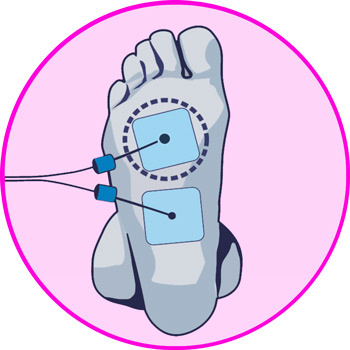
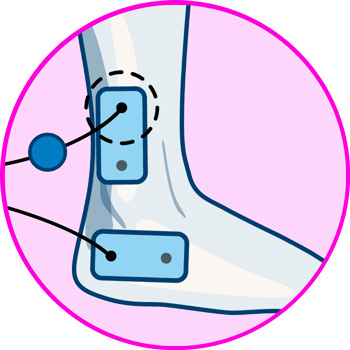
More types of EMS electrostimulators and TENS machines you should know
What is neuropathy and what are the causes?
Neuropathy is a disorder that occurs as a result of damage to the nerves of the peripheral nervous system, which are located outside the brain and spinal cord, affecting various areas of the body, although its effects are usually accentuated in the hands and feet.
The main symptoms of this disorder are:
- Weakness
- Numbness in hands and feet
- Shooting and tingling pain
- Digestive problems
- Circulation problems
There is a wide variety of causes for which a patient may develop peripheral neuropathy or poly neuropathy, among the most common we can highlight the following:
- Traumatic injuries
- Infections
- Metabolic diseases
- Genetic causes
- Exposure to certain toxins
- Diabetes
What are the most common types of neuropathies?
Nephropathy is not a disease that has different types, since it is a condition with quite specific symptoms, so it is easily identifiable. However, it is classified according to different criteria. These are the following:
- Function of the affected nerves: neuropathy can affect both motor and sensory branches in the affected nerves.
- Time of evolution: less than one month is classified as acute neuropathy, after that it is known as chronic neuropathy.
- Forms of development: this classification separates neuropathy into hereditary and acquired forms.
- Guillain-Barré syndrome: disease that causes autoimmune response against the nervous system, causing the symptoms of neuropathy.
Differences between TENS and EMS: Which is better for treating damaged nerves in feet?
Electrotherapy is a very valid method for treating the symptoms of neuropathy when applied correctly. For this reason, it is necessary for the person applying the therapy to be aware of the difference between TENS and EMS electrotherapy modalities.
TENS, or Transcutaneous Electrical Nerve Stimulation, is a therapeutic technique focused on treatment at the nerve level, which makes it particularly effective for treating pain caused by nerve damage that characterizes neuropathy.
Among the main characteristics of TENS we can highlight the following:
- It works through the use of low intensity electric currents, ranging from 1 to 250 Hz.
- It focuses on pain relief at the nervous level.
- Its function is to numb the pain receptors located in the sensory branches of the peroneal nerve, which is predominant in the innervation of the leg and foot, and mainly affected by neuropathy.
- It is one of the most effective options for the treatment of neuropathy.
The focus of EMS, or Electrical Muscle Stimulation is very different, since its function is centered on physical conditioning rather than pain treatment and can be differentiated by the following characteristics.
- It applies currents with a higher base intensity, reaching a minimum of 70 Hz and up to 150 Hz.
- It focuses on muscle conditioning to increase strength, endurance and elasticity.
- Its impulses provoke contractions that favor the regeneration of muscle fibers.
- It is a technique widely used for recovery from muscle injuries.
For this reason, TENS is the best choice when it comes to the treatment of pain caused by peripheral neuropathy. This is because the main cause of pain related to this disorder is caused by nerve damage, which makes the electrical impulses of TENS therapy particularly effective in pain relief.
In contrast, the application of EMS therapy is counterproductive for the relief of pain caused by neuropathy, since its high-intensity electrical discharges generate contractions that can negatively stimulate the nerve endings of the peroneal nerve, causing an increase in the sensation of pain in the affected area.











